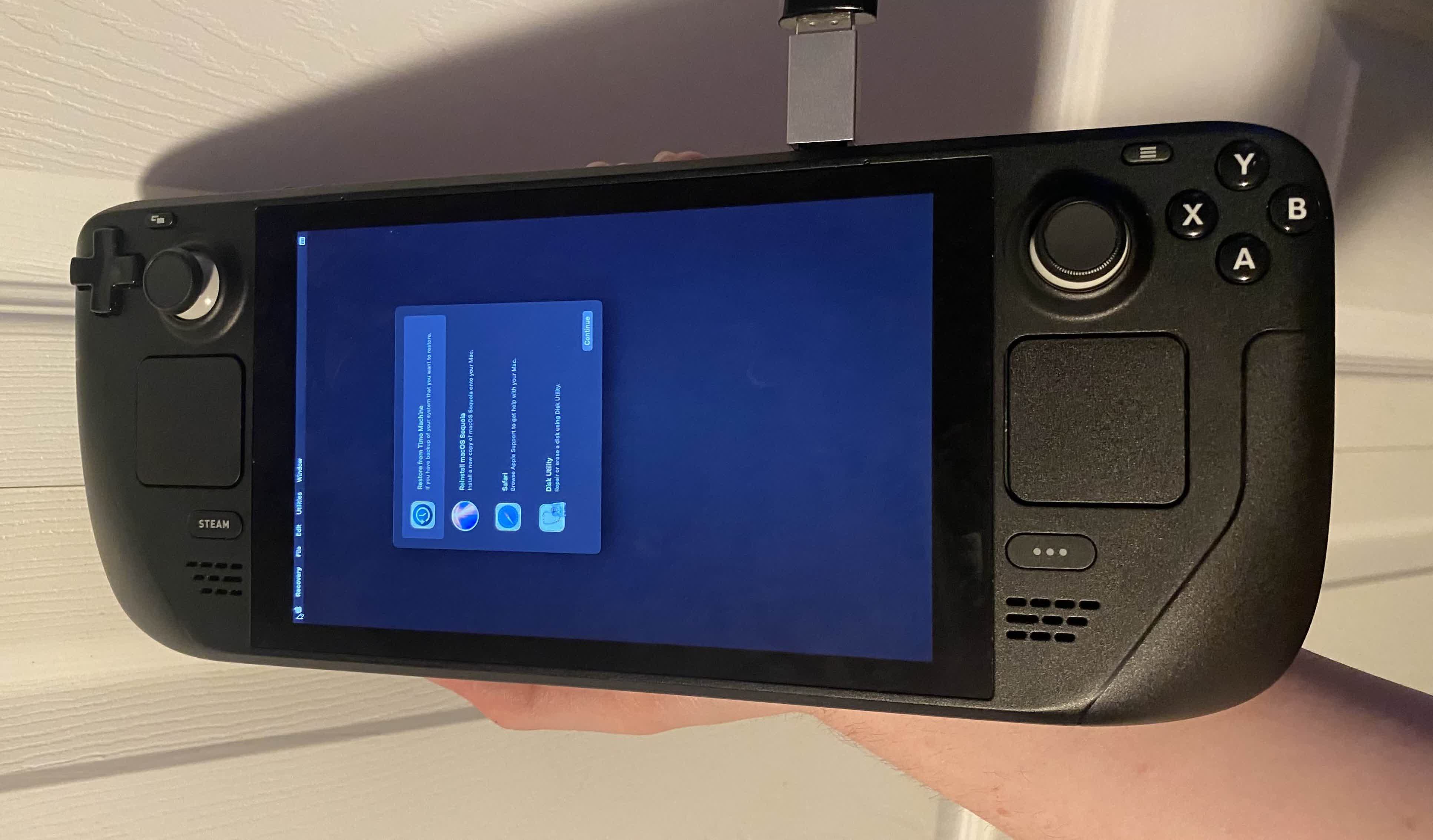What just happened? The Steam Deck is pretty much a full-fledged Linux PC, except in a handheld form factor. It ships with SteamOS, which is based on the Arch Linux distro. But just like any other computer, it has the flexibility to run different operating systems. So, some clever tinkerers have now managed to get Apple's latest desktop OS up and running on Valve's machine.
A hacker going by whatdahopper on X recently showed off footage of the Steam Deck booting into macOS Sequoia. It's an impressive technical feat, made possible through the collaborative efforts of an entire group dedicated to bringing macOS to non-Apple hardware. The OS recognizes the device as an iMac Pro.
Achieving this feat wasn't exactly a walk in the park. whatdahopper admitted it was trickier than just slapping Windows on the Deck. There's also a big catch – the lack of GPU acceleration because the Steam Deck's AMD Van Gogh APU isn't supported. That means gaming and any activity involving graphics is a no-go for now.
with the help of some people (CorpNewt, among others), we got macOS going on the Steam Deck.
– kaitlyn ð (@whatdahopper) October 4, 2024
took awhile, but we figured out a fix to make OS's newer than catalina boot, and so, here is the macOS Sequoia recovery running on Steam Deck... pic.twitter.com/0PfqOGoQIp
The group is optimistic, though, as Apple's RDNA 2 driver support in macOS should theoretically work with the Van Gogh chips once the right kernel extensions land. When that happens, the Steam Deck could potentially transform into a bona fide portable Mac machine – a "Deckintosh," if you will.
However, gaming on this machine is another story, given the lack of supported titles compared to Windows and Linux. Apple indeed has been pushing the Macs hard into the market with titles like Resident Evil, Control, Valheim, and Grid now looking great on the machines, but the other two platforms are so far ahead that it could take years for Apple to catch up.
A better idea would be to install Windows on the Steam Deck – you gain access to those PC exclusives alongside the multitude of apps native to the platform.
In August, Valve released several Windows drivers needed to get the OS up and running, including ones for the APU, SD card, Wi-Fi, Bluetooth, and more. The procedure is relatively simple: all you have to do is create a recovery drive, plug it into the device, and boot into it via the BIOS menu. A method to install Windows directly on the Deck exists too, though it's complicated and not officially supported.
